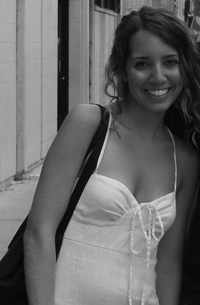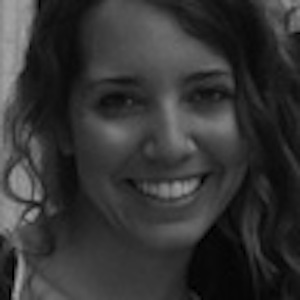If I Were Another by Mahmoud Darwish. 240 pgs. Farrar, Straus, and Giroux, 2009. $28.00.
On the front cover of If I Were Another—a collection of Mahmoud Darwish’s late, longer poems, dating from 1990 until his death in 2008 at the age of sixty-seven—there is a startling photograph of Darwish: legs crossed, hands folded, shirt open at the throat. He sits before the blurry scenery of a tree. The narrowed eyes and cheek shadows of his face have a down-dragging gravity, a reminder of the lifetime it took to reach the mastery of this collection.
It was in a small Arab village in Galilee, when Darwish was fourteen years old, that he read before his school the first poem he ever wrote. Years later, he recalled the idea of it in an interview: a Palestinian boy complains to a Jewish boy, “You can play in the sun as you please, and have your toys, but I can’t. You have a house, and I have none. You have celebrations, but I have none. Why can’t we play together?” The Israeli military commander threatened Darwish: if he so much as wrote another line of poetry like that again, his father would lose his job at the local quarry.
It was a hard time to be a poet, and it still is; in each country, it is hard in different ways. It is almost impossible, even where writing poetry is permitted, to be political and remain inspired. When aside from other poets no audience exists, how can a poet not feel the futility of enacting change? In the United States, where poetry is consumed by a few responsive individuals, there is the conviction that political poetry is irrelevant to political practice; it is seen as rhetorically suspect and lacking in artistic merit. After 9/11, some Americans poets expressed skepticism about poems that dared to broach the subject. It was too soon and too difficult, they said. Marjorie Perloff in her essay, “Writing Poetry After 9/11,” writes, “The events are still too painful—and whatever that poetry will look like, it is not likely to have the pure moral outrage of, say, Milton’s great sonnet on the Massacre at Piedmont which begins, ‘Avenge, Oh Lord, thy slaughtered saints.’” Of course a few poets, such as Robert Hass, braved the challenge and wrote from inside the maelstrom. Hass composed his collection Time and Materials, which includes explicit anti-war poems such as “Bush’s War,” a poem that succeeds because of its honesty about the dilemma: “I typed the brief phrase, “Bush’s War,” / At the top of a sheet of white paper, / Having some dim intuition of a poem / Made luminous by reason that would, / Though I did not have them at hand, / Set the facts out in an orderly way.” Of course, any serious repercussions for disagreeing with our nation’s leaders are largely absent in the United States with its emphasis on freedom of speech.
In the Arab world, however, the poetic audience—and the political ramifications of poetry itself—differ considerably. Perhaps nowhere else are poets more involved in contemporary political realities and public dialogue. For their engagement, Arab poets have been imprisoned, tortured, and forced into exile: Qassim Haddad, Muhammad Afifi Matar, and Abdellatif Laâbi were tortured and imprisoned. Kamal Nasir was murdered. Abd al-Wahab al-Bayyati lived in exile, and Muzzafir al-Nuwwab lives underground. Poetry and politics both concern the art of rhetoric, so it is easy to see why Arab politicians feel threatened by their poets. Could it be that Darwish reached the public, and therefore threatened the leadership, because of his intense engagement with everyday language and politics? The people there celebrated him as “the Palestinian poet” and “the voice of his people.” He was the Arab world’s bestselling poet. Twenty-five thousand gathered in Beirut to hear him speak. How did he accomplish this? I have no definitive answer. What I do know is he spent most of his life writing poetry of resistance, in and out of jail between nighttime house arrests, in flight from one village to the next, until the heart surgery that would end his life.
But poetry for Darwish was first and foremost an exercise in language, not one meditated by patriotic intentions. His voice is neutral, populist, and plain-spoken. He uses tropes and imagery familiar to Palestinian villagers: wheat and garlic, onions and olive groves. In “Exile,” garlic represents exile’s absence of the familiar: “Say farewell to what was / and what will be / say farewell to the scent of garlic / and blood in the shadow of this place.” With tragedies—such as exile and war, which spring from political issues—Darwish stands alongside his audience (note his use of “us” and “our”), never preaching: “Wars teach us to love detail: the shape of our door keys, / how to comb our wheat with eyelashes and walk lightly on our land, / how to cherish the hours before sunset over the zanzalakht . . . / And wars teach us to see God’s image in everything, and to bear / the burden of myths,” he writes in “Truce With the Mongols by the Holm Oak Forest.” Here, we move beyond a national allegory and toward a historical project: “The notion of political poetry has been confused with the notion of the event, isolated from the historical context,” Darwish said. He bemoaned the criticism that he should be writing overtly political poetry. He wanted instead to ignore reductive formulas for what a poem should be or say. “What threatens literary writing the most is the daily aspect of the ‘political,’” he said. “I don’t decide to represent anything except myself.”
This became more clear in Mural, his magnum opus, published in 2000 and collected in If I Were Another. No longer do his political themes refer to the marginalized Palestinian but to the individual on this earth and to Darwish himself. In 1998 he suffered his second heart attack. Can we credit this experience for the shift? Set in the intensive care unit of a hospital, Mural transcends political exile and becomes a response to mortality: “Nothing hurts me at resurrection’s door. / Not time or emotion. I don’t feel / the lightness of things or the heaviness / of obsession. I found no one to ask: / Where is my ‘where’ now? Where is the city / of the dead, and where am I? There is no void / in non-place, in non-time, / or in non-being.” Of course his principal theme has always been exile: from the self, from home, and from love. In his earlier poems of resistance, the pronouns slip between “I” and “we” and “I” and “you,” the plural and singular circling around one another, a device that shows the historical burdens of the Palestinian struggle on the private individual and the public consciousness. In “The Tragedy of Narcissus The Comedy of Silver,” published in 1990, Darwish moves from the first-person singular to the first-person plural: “I defend my journey to my destiny as I defend my anthem / among the palm trees and their punctured shadow” and a few lines later, “We are who we are, so who will change us? We return and don’t return / and march within ourselves.” Here, he distills meaning from the suffering of the oppressed throughout the ages, and emphasizes that suffering by recoiling from the first person and shifting into a respectful third: “They used to dash in life hoping for a path that saves them from scattering . . . / and because they knew from life only life as it gave / itself, they didn’t ask what is after their fates and their graves.”
But in Mural the pronouns are about his own identity: “All pronouns / dissolve. He is in ‘I’ and in ‘you.’ / Not part and not whole. No living / tells the dead: become me. / . . . and all the elements and emotions dissolve. I don’t / see my body over there, I don’t feel / the ardor of death or my first life. / As if I am not me. Who am I? Am I / the missing or the newborn?” Ten years separate “The Tragedy of Narcissus The Comedy of Silver” and Mural. As the collection proceeds, we see him examining himself more closely. In Exile, published in 2005, Darwish pursues the contemplation of his own identity: “Light-footed I walk and look around me / hoping to see a simile between the adjectives of my self / and the willows of this space. But I discern / nothing that points to me.”
If he has never had the popularity of Seamus Heaney, or the international reputation of Czeslaw Milosz_,_ Darwish has nevertheless been fortunate in the criticism he has received. Naomi Shihab Nye called him “the premier poetic voice of the Palestinian people.” Michael Palmer said, “No poet in our time has confronted the violent tides of history with greater humanity or greater artistic range than Mahmoud Darwish.” His accomplishment lies in having composed poetry that transcends cultures. Perhaps it is the metaphysics of identity in his poetry—how the question of who is “I” and who is “we” is blurred; perhaps it is his use of exile as metaphor—how love can be a private exile, for example—how it is not always the political version of exile that he is speaking of: “Take my poem if you want, / there’s nothing in it for me besides you, / take your ‘I.’ I will complete exile / with the messages your hands have left for the doves. / Which one of us is ‘I’ that I may become its other?” Over the years his stable of translators (Fady Joudah, Jeffrey Sacks, Catherine Cobham, John Berger, Rema Hammami, Mohammad Shaheen, Munir Akash, Daniel Abdal-Hayy Moore, Ibrahim Muhawi, and Carolyn Forché) have captured this unadorned style with a monosyllabic, plain approach, which has a way of exploring deep feeling with its lucid simplicity. Greater metaphoric possibilities derive, ironically, from this method, whose range is limited to the abstract: “Am I another you / and you another I? / ‘This isn’t my path to my freedom’s land’ / this isn’t my path to my body / and I won’t be ‘I’ twice.” His approach results in beautiful poems, but the question of what makes something beautiful is a large one. Beauty is impossible to define; Darwish once tried to: “When you read something beautiful you find coexistence; it breaks walls down . . .” Some critics may focus on themes that reinforce nationalist readings of his work, but such heavy-handed obtuseness ignores what I believe is the poetry’s beauty: Why paraphrase the poems in a political context when you can listen to the voice of something that enchants, such as in the poem I See What I Want:
As I look behind me in this night
into the tree leaves and the leaves of life
as I stare into the water’s memory and the memory of sand
I do not see in this night
other than the end of this night
the ticking clock gnaws at my life by the second
and also shortens the life of this night
nothing of the night or of me remains to wrestle over . . . or about
but the night goes back to its night
and I fall into this shadow’s pit
Darwish’s work has been talked about, worried over, denounced, and adored. When in 2000 Education Minister Yossi Sarid said that Darwish’s poems should be included in Israeli high school curricula, it was an ironic end considering where the fourteen-year-old Darwish had begun.

Jeannie Vanasco is an Emerging Poets Fellow at Poets House. Her writing has appeared in The Believer, The New Yorker book blog, The Times Literary Supplement, Tin House, and elsewhere. She is currently writing a book of nonfiction involving necronyms, mental illness, and an artificial eye. You can find her at www.jeannievanasco.com. (updated 5/2014)
